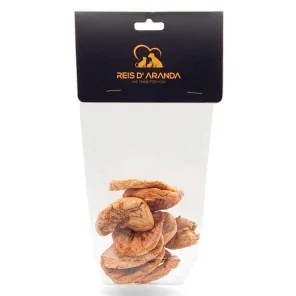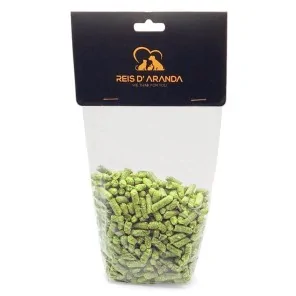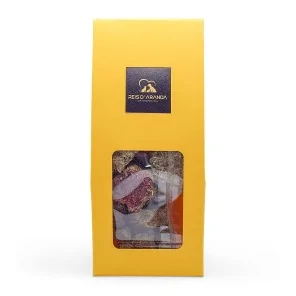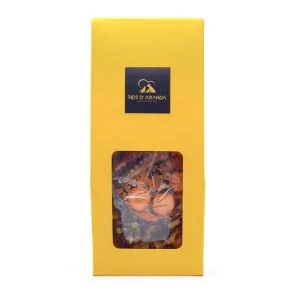The Tornjak originated from genetically homogeneous, almost extinct, indigenous shepherd dogs. These dogs have...
THE CALIFORNIAN RABBIT
INTRODUCTION
The Californian, also known as the California White, is a breed of domestic rabbit initially developed for the fur and meat industries by George S. West of Lynwood, California, beginning in 1923.
THE HISTORY OF THE CALIFORNIAN RABBIT
The origins of the Californian rabbit date back to the 1920s in the state of California, USA. It was developed by George S. West, a rabbit breeder who sought to create a breed with excellent meat quality and a coat suitable for the fur industry. The development of this breed involved the crossing of three specific breeds:
- HIMALAYA: Contributed the distinctive coat colouring.
- CHINCHILLA: Contributed the density and quality of the coat.
- NEW ZEALAND WHITE: Provided the robust structure and rapid growth rate.
Through careful selection and breeding, George S. West succeeded in establishing the Californian breed, which was first introduced to the public in 1928 at the National Convention of the American Rabbit Breeders Association. The breed quickly gained popularity due to its exceptional characteristics.
During the 1930s and 1940s, the Californian rabbit established itself in North America as one of the leading breeds for meat production. Its rapid growth and excellent meat quality made it a preferred choice for commercial breeders. In addition, World War II increased the demand for affordable protein sources, which contributed to its expansion.
After World War II, the popularity of the Californian rabbit spread internationally. Countries in Europe, South America and Asia adopted the breed because of its adaptability to different climates and husbandry conditions. The versatility and superior characteristics of the Californian rabbit made it an attractive option for breeders around the world.
With the advancement of breeding techniques and genetics, breeders have continually improved the breed. Genetic selection, controlled breeding and improved housing and feeding conditions have allowed the Californian rabbit to maintain its position as one of the best breeds for meat production.
WHAT IS THE CALIFORNIAN RABBIT LIKE?
BODY TYPE, SHAPE AND CONSTRUCTION: The body is robust. Shoulders, back and rear body should be of equal width and strongly muscled. Flat back line and good roundness of body again. A good shape should impose on the viewer. The flower is short and close to the body. In bitches a small, well shaped dewlap is permissible.
2. WEIGHT:
- NORMAL WEIGHT: 4,00 kg.
- MINIMUM WEIGHT: 3,00 kg.
- MAXIMUM WEIGHT: 5,00 kg.
3. COAT : The coat is long and medium thick. A good coat completes the coat. The ears are well furred.
4. HEAD AND EARS: The head is short and strong, has a broad forehead and is connected directly to the body. The ears measure between 11.0 and 13.0 cm, corresponding to the length of the body, are carried erect and are firm and stable in the tissue.
- Slight faults: Head shape not pronounced. Thin, wrinkled ears, somewhat short or long, size of body and ears not appropriate to type.
- SERIOUS FAULTS: Strong in racial or gender characteristics; different head formation. Totally different way of carrying the ears. Ear length of less than 10.0 cm and 14.0 cm.
5. MARKINGS: The pattern reflects the mask, ears, front legs, hind legs and flowers. The mask has an oblong oval shape, is well rounded, to cover the nose and sides extending to the upper jaw and lower jaw. The mask should not be too large and not high enough at eye level. The ears are well defined at the root. The pattern of the trunk extends to the hair coloured parts of the front and hind legs as well as the tail. The front section of the front legs should be outlined as sharply as possible. The hind legs are covered up to above the ankle of the pattern. Even with the hind legs, exact definition is desired. The tail is captured in its full length of the pattern.
- Slight faults: Uneven mask. Not sharply demarcated ears. Somewhat short or long, and blurred or flat tail feathering.
- SERIOUS FAULTS: Mask too large. Drawing of the hind legs, not detecting the ankle.
6. COLOUR: The ground colour, always with good gloss, is pure white. As white is the ground colour it is not different from the base colour. The eyes are bright red with dark horn coloured nails. Open to black, havana and blue and white strokes, the respective colour of the drawing should be pure, i.e. have as rich a colour as possible.
- Slight faults: Eyes somewhat focussed on the rim, small spot of colour on the throat or dewlap. Prevailing slightly white or slightly blotchy colour pattern.
- SERIOUS FAULTS: Very pronounced dark circles under eyes, black markings on base colour (except for small spot of colour on throat or dewlap). Apart from the required eye colour, two colours or unpigmented claws. White patches in the pattern colour: strict compliance of the pattern colour with the white coat.
MAIN FUNCTION OF THE CALIFORNIAN RABBIT
The Californian rabbit is highly valued in the rabbit industry for several reasons:
- FAST GROWTH: They reach processing weight in approximately 8 to 10 weeks.
- MEAT QUALITY: Meat is of high quality, with a good balance between muscle and fat.
- FERTILITY: High birth rates and good offspring survival rates.
- ADAPTABILITY: They adapt well to different environmental conditions and production systems.
WHAT IS THE CALIFORNIAN RABBIT LIKE AS A PET?
As famous as the peculiar pigmentation of its coat, is the friendly and affectionate character that characterises the Californian rabbit, making it one of the best rabbit breeds for families with children. These lagomorphs stand out for being very curious, enjoying being on the loose and exploring their environment freely. But we must be careful that they do not hide in dangerous places, as well as having a safe and properly delimited environment to prevent our rabbit from escaping.
Despite their great curiosity, Californian rabbits can be a little shy when they arrive at their new home or meet an unfamiliar person or animal for the first time. Fortunately, these adorable rodents are usually very easy to socialise, so with the help of positive reinforcement and a supportive environment, they quickly adapt to their surroundings and are eager to interact with their new family. Logically, like any companion animal, Californian rabbits also need to have their quiet times respected, especially when resting and feeding.
In addition, the Californian rabbit is highly intelligent and, when well stimulated, they tend to be very predisposed to learning. For this reason, when adopting a rabbit, it is important to commit oneself to its education and mental stimulation, presenting it with different obedience commands, tricks, tasks and varied activities.
CONCLUSION
The ARBA recognises only the original ‘standard’ colour variety of white with dark spots, while the British Rabbit Council (BRC) recognises four colour varieties: normal, chocolate, blue or lilac spots. The BRC standard requires a desired weight of 9,5 lbs (4,3 kg) with a minimum of 7,5 lbs (3,4 kg), while the ARBA accepts a maximum weight of 10,5 lbs (4,8 kg).
Leave a comment
Log in to post comments
















